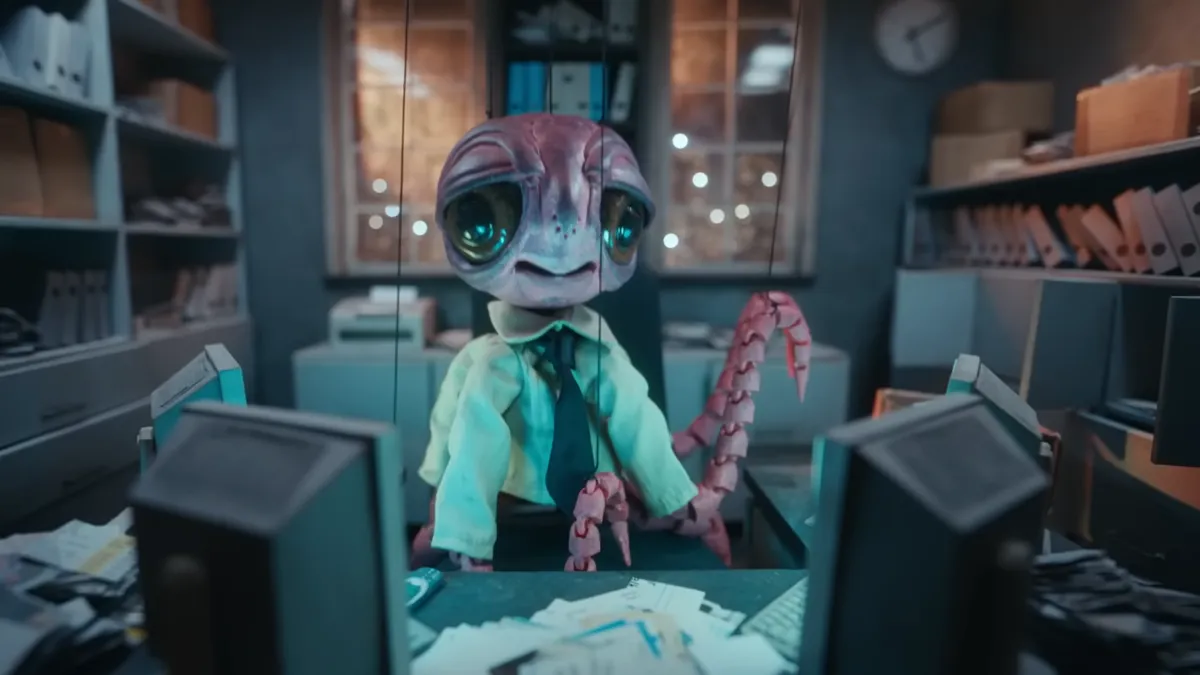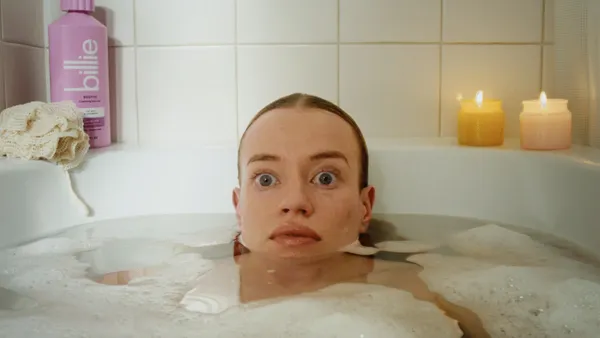Campaign Trail is our analysis of some of the best new creative efforts from the marketing world. View past columns in the archives here.
In Squarespace's latest Super Bowl ad, multiples of actor Adam Driver approached a singularity created by the tech platform, a website that makes websites. The high-concept spot aimed to cut through the noise of the big game but also left more work for future brand campaigns.
"At the Super Bowl, you have to be so focused on your message. It's 30 seconds, a lot is happening, people are not necessarily paying full attention, they might be in a bar, they might be at a party at their house," said Gui Borchert, senior creative director at Squarespace. "The clarity of 'a website that makes websites' set the ground, but what else? What do you do with it?"
Squarespace aimed to answer that question — in outsized, eye-popping fashion — in "Make A Website To Sell Anything," its latest extension of its "Everything To Sell Anything" campaign.
The 30-second spot is a quick moving parade of zany businesses that you might find in an alternate universe of Squarespace-created websites, including an octopus-marionette show; a homemade space stimulator ride; elevated laugh therapy with a mountaintop guru; a cryo chamber visit; a haircut that can only be described as a goatee-mullet.
By showcasing bizarre and even surreal business ideas, Squarespace looked to literalize the "anything" in its campaign tagline by showing the breadth of what consumers can do with its websites. The approach also extended the same clutter-cutting spirit of the Super Bowl spot by avoiding typical use-cases seen in ads for other digital-services companies, like a yoga instructor or a garage-based e-commerce proprietor.
"In an ocean of so many ads and things you can watch on your screens, how can you make this rewarding and [make consumers] want to keep watching because at every turn there's a new thing," Borchert explained. "We could easily open on somebody on a laptop and look into camera with a Squarespace website [but] if that came on TV, why would I want to keep watching somebody sitting at a computer?"
Collaborative Tetris
"Make A Website To Sell Anything" is certainly eye-catching, with an out-there style that recalls Oscar-winner "Everything All At Once" and the works of filmmaker Michel Gondry. The ad is the product of a creative process that allows everyone involved to brainstorm and contribute, rather than a traditional top-down approach where a brand provides the director with a brief and then becomes an approver rather than a collaborator.
"I'm a firm believer that when you walk into the pre-production meeting, you shouldn't be able to tell who is the director, who is the producer, who's the writer, who's the actor — it should be a group of people just really excited about this thing, and it might take a minute to figure out who's who," Borchert said.
A fruitful pre-production process yielded 30 to 40 different ideas that were whittled down into the final handful that appears in the 30-second spot. The best ideas had to be just-weird-enough but also clear enough to show in a few seconds, without repeating product or service categories. Getting the right mix was like Tetris where the best idea won, no matter who pitched it.
"You could ask me now and I have no idea which one came from where, but I know that they were all things that we all gravitated to and built on… it just snowballs in the best possible way," Borchert said. "When we're discussing what's hanging on the walls of the octopus' office, you know you're in the right zone."
Apart from simply being entertaining and illustrating the breadth of businesses that can use Squarespace's services, the spot also is connected to a larger brand truth about how it empowers people to put their ideas into the world — no matter how unique — without the costly work required by earlier iterations of the internet.
"There's a bigger truth here which is democratizing access to high design that would be inconceivable if we didn't exist," Borchert posits. "Squarespace was able to democratize this idea that if you have an idea, you can put it online. I think that becomes a truth for us, and then the story becomes powerful on its own."














